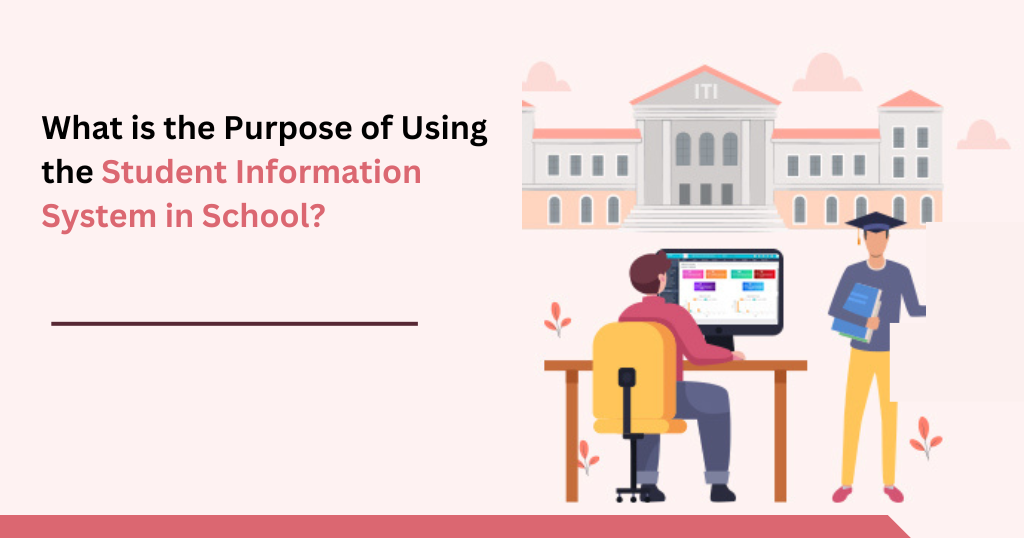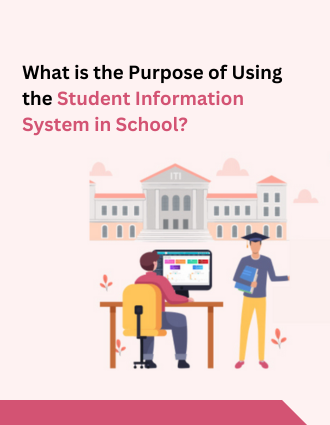The field of education presents an ever-changing landscape. This broad field includes both formal and informal learning environments, including conventional classrooms, online learning environments, and experiential learning environments, and spans from early childhood education to higher education.
Using a Student Information System (SIS) can assist in reducing a wide range of administrative tasks. For this reason, putting in place a student information system can make the classroom more efficient, well-organized, and fun for both teachers and students. Let’s go back to the source of all things student information systems: educational technology.

What is a Student Information Management System?
Online platforms or modules called school management ERP systems assist educational institutions in simply and effectively managing the data of their students. All student-related matters, including personal data, contact details, reports, academic history, attendance, tests, and more, are uniquely handled by this platform.
For the purpose of streamlining the gathering and recording of student data onto a single platform, educational institutions favor employing Student Information Systems. Typically, a student information system is a part of the School Management System (SMS), a larger platform.
Numerous data point to the expanding significance of student information systems in the field of education as well as its extraordinary influence on both administrative effectiveness and student outcomes.
What is the Purpose of Using the Student Information System in School?
Educational institutions offer various benefits from the installation of a student information management system, such as better data management, increased administrative effectiveness, improved communication, and more student participation.
● Smooth Management of Student Information
School administrators will be able to automate the entire admissions process, register new students, place students in classrooms, keep track of student information, and compile annual academic reports with the use of a student information system. Student management ERP software allows administrators and teachers to monitor a student’s development in all areas—behavioral, academic, medical, etc.
Schools can connect online with prospective students and their families through a number of platforms that provide Student Information Systems. Enrollment in online schools has grown significantly, particularly since the COVID-19 pandemic, when everything switched to digital media. Administrators of schools have the ability to build online registration forms and arrange the various fields that need to be filled out.
Administrators at schools can also handle parent data with ease thanks to these platforms. Names, phone numbers, email addresses, and more can be included in a SIS platform.
● Organized Oversight of Daily Operations
For administrators and instructors, a school’s everyday operations and tasks are typically demanding and complex. These can take the form of scheduling meetings, collecting attendance from students, and giving teachers break duty.
Teachers and school administrators will find it simple to enter this data on a digital platform that is stored in cloud storage with the help of student management ERP software. Schools and universities can handle all student-related data from a single, centralized platform by using a student information system.
Without requiring numerous systems, it gives instructors and administrators quick and simple access to information about admissions, attendance, grades, performance, and more.
● Significant Decrease in the Workload of Teachers
Teachers can save time on administrative duties like lesson planning and exam grading by utilizing a student information system. Certain student information systems found in Learning Management Systems, for instance, have the ability to grade assignments and quizzes automatically.
They can also offer analytics that assists instructors in tracking their student’s progress and pinpointing areas in which their students might want more aid.
● Improved Student Retention
Schools have recently begun to place more emphasis on the idea of student retention. An important component of every school’s overall enrollment management plan is student retention.
Giving children the help and chances they genuinely need to develop and flourish in a supportive atmosphere should, therefore, be schools’ top priorities. With the help of a SIS platform, this can be executed with certainty, giving pupils the highest chance of success in the end.
● Simple Arrangements for Parent-Teacher Conferences
Teachers can schedule appointments with parents at their convenience using the scheduling features included in student information systems, and vice versa. Parents can check available time slots and schedule appointments using these technologies, which can be integrated with the school’s ERP system without having to get in touch with the teacher or the school.
To make sure parents remember their booked appointments and lower the possibility of missed meetings, student information management systems typically offer automated reminders. The student information management system can contact, text, or email parents.
Student management ERP software helps teachers, students, and parents communicate. With this technology, teachers may instantly update parents on their child’s progress and encourage them to discuss any general concerns.
● Thorough Monitoring of Students’ Workload
Teachers realize the need to track student workload for several reasons. We must ensure that students are not overburdened with assignments, support those who struggle with time management, and monitor their workload to ensure it meets the school’s learning objectives.
Student information management systems’ planning features allow teachers to give students planners or calendars to assist them in managing their time and tasks. Students can use this system to track assignments, due dates, and other important events.
● Increased Efficiency of Teachers
Best ERP software for schools to streamline time-consuming tasks, including report card creation, grade tracking, and attendance tracking. Thus, administrators and teachers spend more time teaching and less time administering the school.
Another great element of the system is real-time data analytics, which helps administrators and teachers choose curriculum, student support services, and resources.
Conclusion
Proctur a best student management system needs student information systems. In recent years, intelligent, automated decision-making technologies have become increasingly popular in education.
By enabling them to concentrate more on student learning and less on administrative duties, student information management systems support teachers in making wise decisions about instruction.
In the end, purchasing a student information system is unquestionably a smart move for academic institutions trying to enhance operations and give students a top-notch education.



